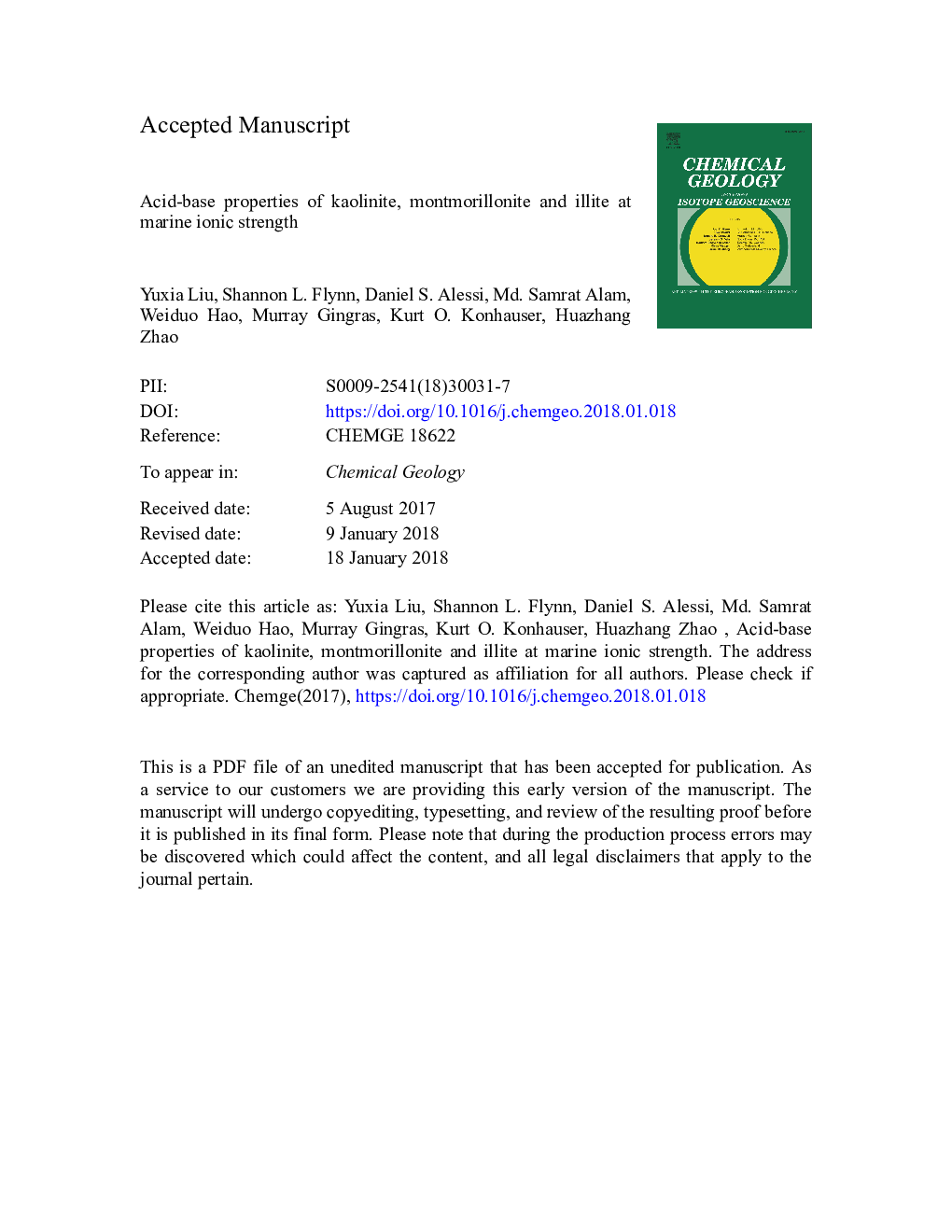| کد مقاله | کد نشریه | سال انتشار | مقاله انگلیسی | نسخه تمام متن |
|---|---|---|---|---|
| 8910280 | 1637491 | 2018 | 37 صفحه PDF | دانلود رایگان |
عنوان انگلیسی مقاله ISI
Acid-base properties of kaolinite, montmorillonite and illite at marine ionic strength
ترجمه فارسی عنوان
خواص پایه اسیدی کائولینیت، مونتموریلونیت و الیوت در قدرت یونی دریایی
دانلود مقاله + سفارش ترجمه
دانلود مقاله ISI انگلیسی
رایگان برای ایرانیان
کلمات کلیدی
موضوعات مرتبط
مهندسی و علوم پایه
علوم زمین و سیارات
ژئوشیمی و پترولوژی
چکیده انگلیسی
In marginal marine settings, understanding the role that clay minerals play in the transfer of metal cations from the water column to the seafloor is important if the composition of modern muds is to be used as a proxy for the precursors of ancient shale deposits. In this study, we conducted potentiometric titrations of three naturally abundant clay minerals (kaolinite, montmorillonite and illite) in 0.56â¯M NaCl electrolyte solutions to ascertain the surface reactivity of each clay mineral at seawater ionic strength. Our results demonstrate that all three clay minerals were increasingly anionic as pH increases from 3 to 9, with montmorillonite having the highest negative-charge. The potentiometric titrations and adsorption data were modeled using both non-electrostatic (NEM) and electrostatic (constant-capacitance model, CCM) surface complexation models (SCMs). A two-site surface complexation model, that included one basal siloxane surface site (â¡Xâ) and one amphoteric edge site (â¡SOH), provided an excellent fit for the protonation data of each mineral. Cd(II) adsorption experiments were conducted to quantify the magnitude of cation adsorption, which showed that 10â¯g montmorillonite, illite, and kaolinite powder could bind an equivalent of 4.7â¯Ãâ¯10â4â¯g, 4.3â¯Ãâ¯10â4â¯g, and 4.0â¯Ãâ¯10â4â¯g of Cd, respectively, under conditions relevant to seawater (initial Cd concentration of 8.9â¯Ãâ¯10â6â¯M, and pHâ¯=â¯8). To place this value into the context of modern riverine clay inputs to the ocean, 13.5â¯Ãâ¯109 tons of total suspended sediment are deposited annually (Milliman and Meade, 1983) of which 10 to 25% is clay (Manheim et al., 1970; Schroeder et al., 2015). The total amount of Cd adsorbed to suspended clay minerals entering the modern oceans could then amount to approximately 104 to 105 tons per year. The results of this study highlight the potential role of clay minerals in transporting metals from the ocean water column to the seafloor.
ناشر
Database: Elsevier - ScienceDirect (ساینس دایرکت)
Journal: Chemical Geology - Volume 483, 20 April 2018, Pages 191-200
Journal: Chemical Geology - Volume 483, 20 April 2018, Pages 191-200
نویسندگان
Yuxia Liu, Daniel S. Alessi, Shannon L. Flynn, Md. Samrat Alam, Weiduo Hao, Murray Gingras, Huazhang Zhao, Kurt O. Konhauser,
